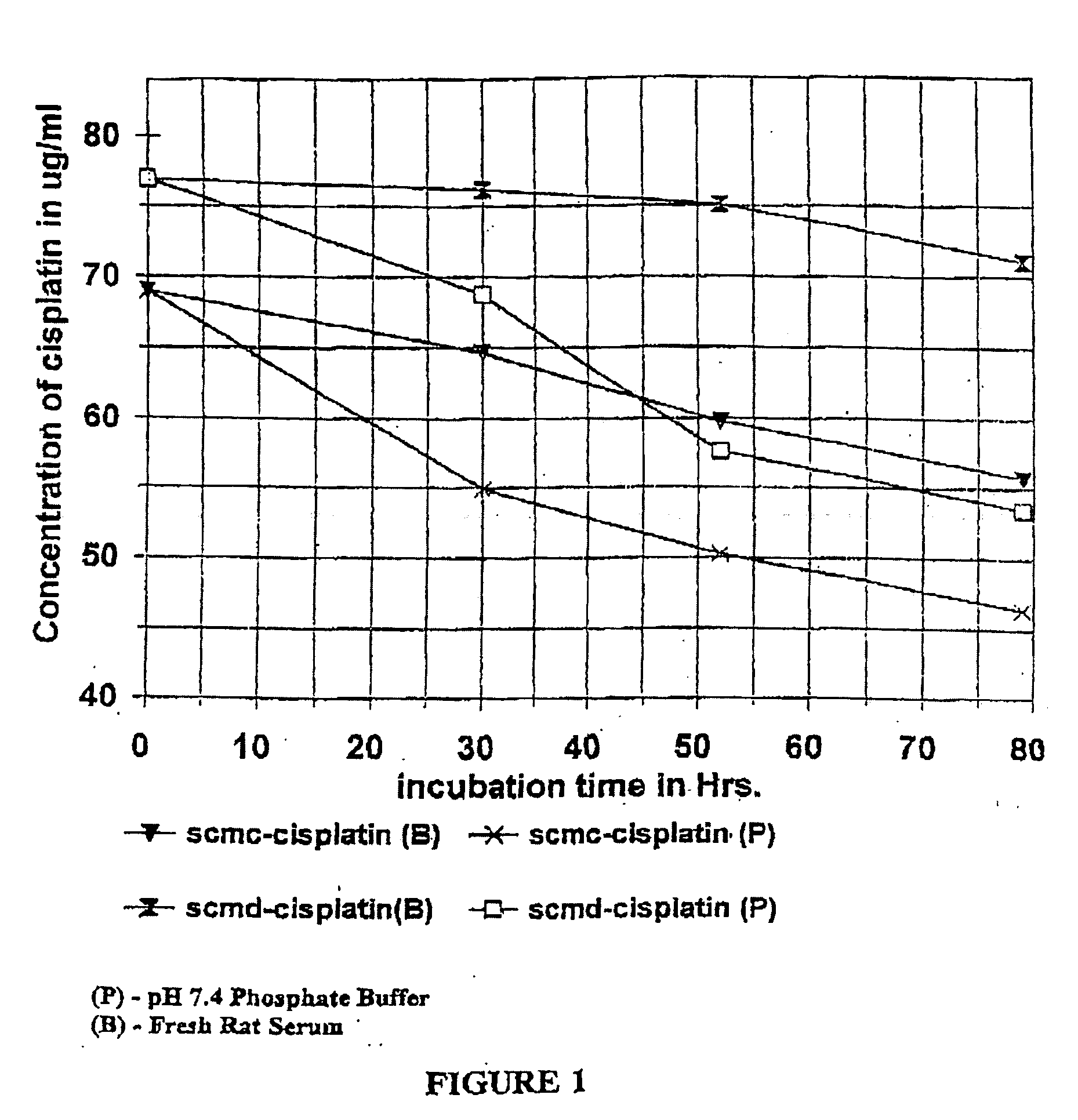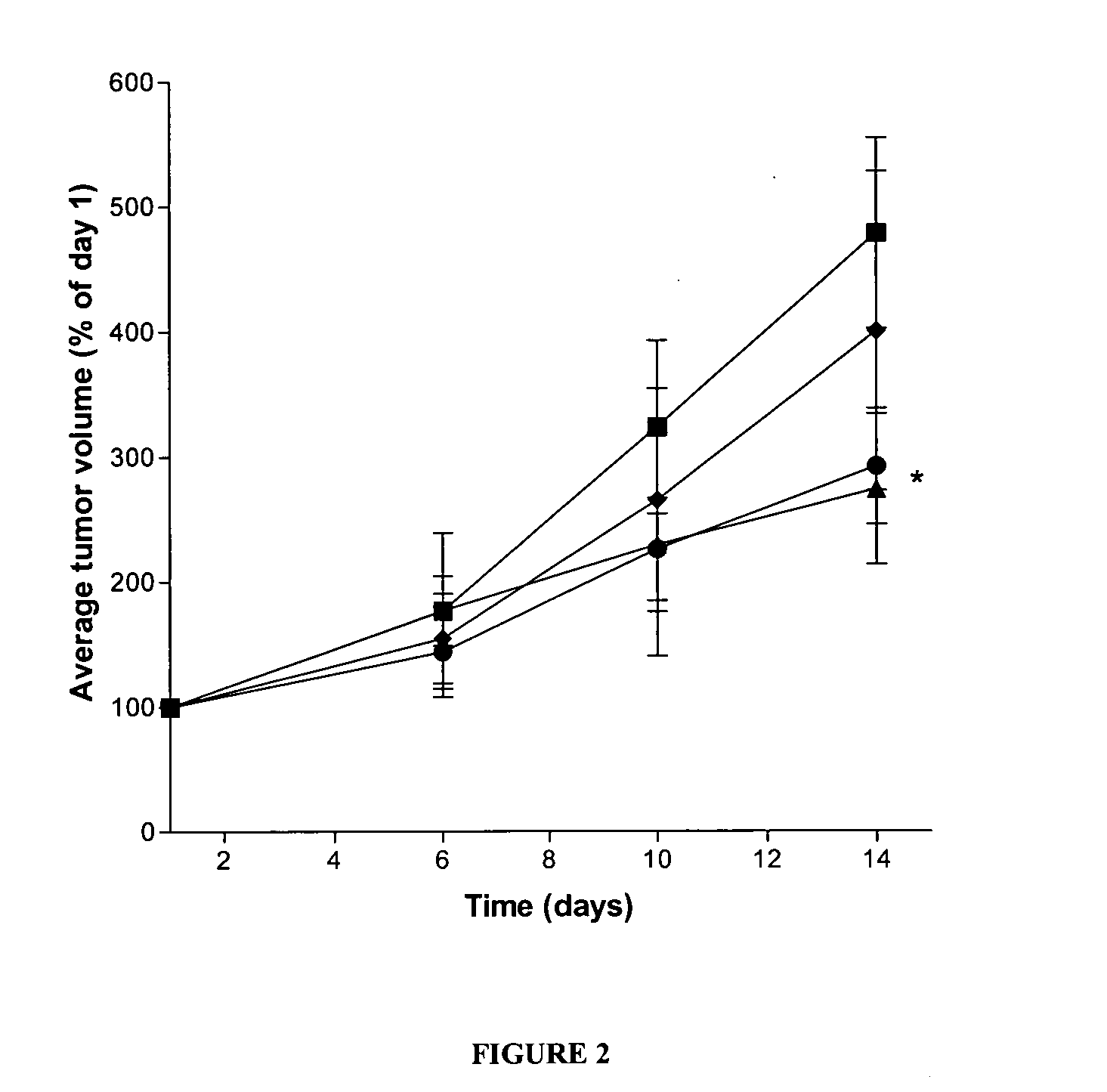Lactones of carboxylic acid polysaccharides and methods for forming conjugates thereof
a technology of carboxylic acid polysaccharides and carboxylic acid polysaccharides, which is applied in the direction of sugar derivates, organic chemistry, chemistry apparatus and processes, etc., can solve the problems of short body life, toxic or untoward side effects, and difficulty in reaching certain targets with systemically delivered drugs
- Summary
- Abstract
- Description
- Claims
- Application Information
AI Technical Summary
Benefits of technology
Problems solved by technology
Method used
Image
Examples
example 1
Preparation of the Lactones
a) Purification of Starting Materials
[0095] It is preferred that all saccharide acids be purified, finely-powdered, anhydrous carboxylic acids with minimal sodium or potassium carboxylate content. Only the free acid form of the carbohydrate generates a lactone under the conditions according to the present invention. To obtain effective lactonization, all starting materials (whether indicated as free acids or as salts by method of synthesis or by label description on commercial materials) were dissolved in distilled, deionized water and passed over a mixed bed resin ion exchange column. While other appropriate columns would be satisfactory, the Sigma Mixed Bed Resin TMD-8 column was selected for this purpose. The eluant was charged to a dialysis bag (Sigma 12,000 molecular weight exclusion), and dialyzed against distilled water for three to five days with replacement of the external water every 24 hours. The contents of the dialysis bag were evaporated i...
example 2
Preparation of Carboxymethyl Cellulose Lactone (CMCL)
[0102] The hitherto unknown lactone of carboxymethyl cellulose (CMCL) provides a reliable coupling promoter for a wide variety of amino- and hydroxyl-containing biologically important molecules. The route to the synthesis of this lactone is illustrated below, wherein the sodium carboxymethyl cellulose is converted to the acid and the acid to the lactone.
[0103] Carboxymethyl cellulose (free acid) was purified as previously described. The white flaky solid (1.0 g) was pulverized to dust in a wiggle-bug, suspended in 60 ml of anhydrous diglyme (or xylene), and heated at 150° C. for 24 hrs. The solvent was evaporated to 25 ml, chilled, and the lactone filtered off as a water-insoluble off-white solid. This solid was filtered and washed quickly twice with 10 ml each of cold water. The resulting product was then dried in vacuo by lyophilization.
[0104] If all the solvent used in the lactonization is evaporated to dryness in a rotary v...
example 3
[0105] A suspension 2.0 g of purified, dried, finely pulverized pectin acid was prepared in 70 ml of anhydrous toluene and heated with stirring at reflux for 24 hr, following the general procedure described above. Evaporation of the solvent yielded a water-insoluble, gummy, semi-solid whose IR spectrum revealed lactone (1748 cm−1) and nonreacted acid (1680 cm−1) in an intensity ratio of 70 / 30 lactone / acid. While the pectin acid could not be driven to a higher lactone content, this lactone could be ring-opened with nucleophilic molecules (i.e., primary and secondary amines and alcohols); in preferred embodiments, the nucleophile is a small molecule. Alternatively, as described below, it was possible to optimize the loading of the small molecule onto pectin by an in situ generation and ring-opening of the lactone.
PUM
| Property | Measurement | Unit |
|---|---|---|
| temperatures | aaaaa | aaaaa |
| volume | aaaaa | aaaaa |
| temperature | aaaaa | aaaaa |
Abstract
Description
Claims
Application Information
 Login to View More
Login to View More - R&D
- Intellectual Property
- Life Sciences
- Materials
- Tech Scout
- Unparalleled Data Quality
- Higher Quality Content
- 60% Fewer Hallucinations
Browse by: Latest US Patents, China's latest patents, Technical Efficacy Thesaurus, Application Domain, Technology Topic, Popular Technical Reports.
© 2025 PatSnap. All rights reserved.Legal|Privacy policy|Modern Slavery Act Transparency Statement|Sitemap|About US| Contact US: help@patsnap.com



